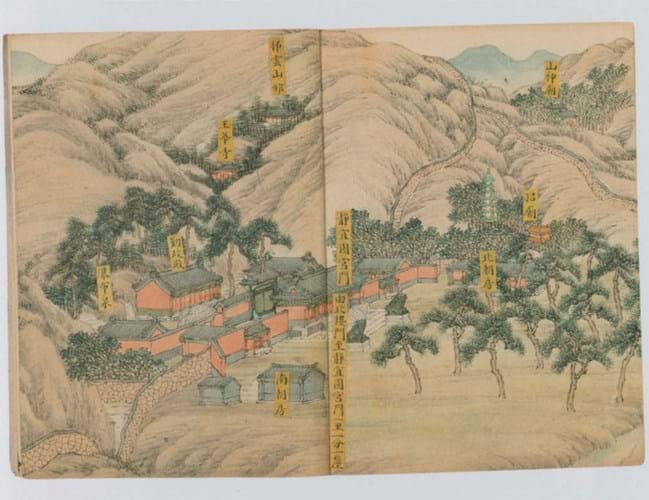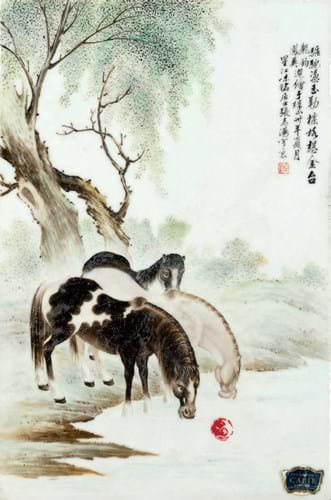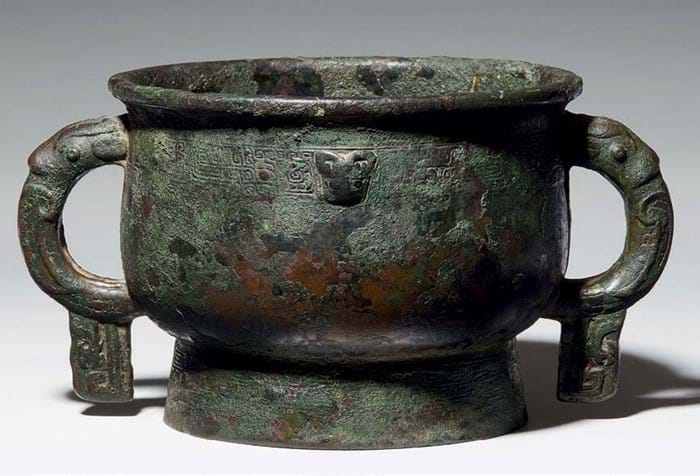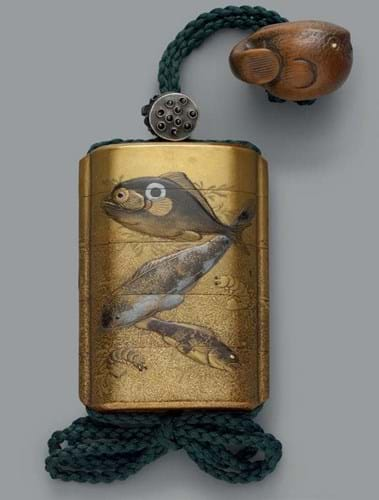
As many of the recent results demonstrated, market values are difficult to predict. Every auction had its major surprises, more often than not driven by the seemingly never-ending financial reserves of collectors from China and other parts of Asia.
Six figures in Salzburg
First stop was Salzburg, where for several years Stuttgart auction house Nagel (33% buyer’s premium) has held its important Asian auctions.
In contrast to several previous sales, the extensive offer of December 5-6 produced no seven-figure results, but there was a good selection of six-figure prices. Almost all the top lots went to mainland China, on occasion also to Taiwan.
One of the exceptions was a 7in (18cm) gold figure of the Hindu deity Shiva pictured top, made around the 14th century in Indonesia.
The 18-21ct figure, which weighed some 45oz, was in far from pristine condition, being partly corroded and lacking its feet.
This did nothing to deter the numerous bidders who put up their hands. The hammer fell at €170,000 (£144,070), almost three times the lower guide. This time, the Chinese were outpaced by a buyer from Singapore.
That price was matched by the result for a 14in (35cm) high bronze figure of Manjushri, the bodhisattva of wisdom and literature.
The late Ming period figure had been acquired by the consignor in the 1970s and was expected to bring €20,000-30,000. The Beijing collector who finally sealed the deal had to bid €170,000 (£144,070).

A view of a double page from the 76-page handbook illustrated in ink and colour with The Imperial Route from the Forbidden City to the Xianshan Hunting Park. The book sold for €64,000 (£54,240) at Nagel.
Passionate bidding greeted an illustrated book in ink and colour, depicting on 76 pages the Imperial Route from the Forbidden City to the Xiangshan Hunting Park.
The finely detailed illustrations were executed in the 18th or 19th century and possibly intended as a handbook for the members of the court who were responsible for organising the emperor’s excursions.
With a guide of €1500-2500, Nagel was perhaps surprised by the ensuing demand and, after a multitude of exchanges, a Chinese collector secured his prize for €64,000 (£54,240).
Another form of Chinese pictorial art were kesi, woven silk tapestries. A pair of large wood-framed 18th century weavings, each measuring 4ft 1in x 2ft 7in (1.24m x 78cm), showing aged scholars in wooded mountain landscapes, also attracted plenty of bidders. The result of €110,000 (£93,220) was 11 times the upper estimate.
Equally sought-after was an 18th century jade carving of a vase resting on the back of a seated elephant.
The 7in (18cm) high, finely carved work was in good condition and was part of a European collection that had been put together between 1960- 90. The catalogue price was €4000-6000, but more than a handful of Chinese bidders were prepared to go higher. It sold for €110,000 (£93,220), going to Taiwan.
Among the many porcelain vessels on offer, one in particular had an interesting provenance. It was a 17th century imperial wucai vase, decorated in five colours with qilin in a landscape.
The vase had belonged to the consignor’s family since the 1920s and, by repute, was part of the inventory of Charlottenburg Castle in Berlin in about 1835. The hammer price of €64,000 (£54,240) was over four times the lower guide.

Chinese Republic period porcelain plaque painted by Zhang Zhitang with horses at a watering hole. It sold for €40,000 (£33,900) at Nagel.
The bidders not only set their sights on historic porcelain. Collectors zoomed in on a rare piece of 20th century Republic period porcelain. It was a 15 x 10in (38 x 25cm) panel, painted with horses at a watering hole by Zhang Zhitang
(1893-9171) in 1941, the 30th year of the Republic. Because of the political, military and economic upheaval of this period, very little porcelain was produced at the time. When a work by a desirable artist does come on the market, the bidders are highly motivated.
So much so that the Chinese collector who eventually outbid his countrymen could only do so at €40,000 (£33,900), more than 25 times the moderate estimate.
Cologne vase shines
On December 6, Van Ham (29% buyer’s premium) in Cologne presented its Asian art sale.
Among the highlights was a 12in (31cm) pear-shaped, yuhuchu porcelain vase decorated with the dramatic depiction of a dragon in carmine red, set among a complex background of floral motifs, incorporating lotus, peonies, lilies and chrysanthemums.
At some time, the neck had been damaged and replaced with a wooden ring reflected in the moderate guide of €4000-6000.
The in-house experts had been wary about dating the vase, but in the run-up to the sale, more than one voice suggested it was made during the Qianlong period (1736-95).
These factors did not deter bidders who drove the price to €45,000 (£38,135), at which point a Chinese collector outpaced her international competitors.
A collector from Monte Carlo had his work cut out when he tried to secure several modestly estimated woodblock prints, Qing dynasty, 17th or 18th century, from a private Rhenish collection.
Determined competition from numerous bidders took the prices to an unexpected level.
Two prints with depictions of deities, offered as one lot, were pushed from €1000 to €38,000 (£32,205). Two others, View of the Temple of Jinshan and The Poet Tang Yin meeting friends, were offered separately in two lots which also sold for €38,000 (£32,205) each, vastly more than the three-figure guides.
Going international

This early Zhou period gui was part of a collection of archaic Chinese ritual bronze vessels offered at Lempertz where it made €170,000 (£144,070).
International bidders also played a major part at Lempertz (24% buyer’s premium) in Cologne on December 6-7.
Highly sought after were archaic Chinese ritual bronze vessels from the collection of Gerda and Gottfried Hertel.
A 6in (15cm) high, two-handled gui food vessel from the early Zhou Period (12th-10th century BC), was the subject of fierce competition.
It was estimated at an enticing €5000-7000 but only went to a Chinese-American dealer when bidding reached €170,000 (£144,070).
He was the dominant bidder in this section and among other lots he also purchased a yan vessel from the Western Zhou Period for €70,000 (£59,320) and a zhi drinking vessel for €55,000 (£46,610).
While – in keeping with the international trend – Asian sales are generally dominated by Chinese works of art, Lempertz has not abandoned Japanese works of art, even though the returns are much lower.
The highest price in the netsuke section was a top-estimate €6000 (£5085) for a late 19th century ivory skull with a snake and a frog.

The most expensive of a collection of 22 Japanese inro offered by Lempertz was this 19th century example decorated with fish which realised €5400 (£4575).
A German collection of 22 inro was also well received, with a 19th century example, decorated on both sides with a variety of fish, taking top honours at €5400 (£4575).
£1 = €1.18















